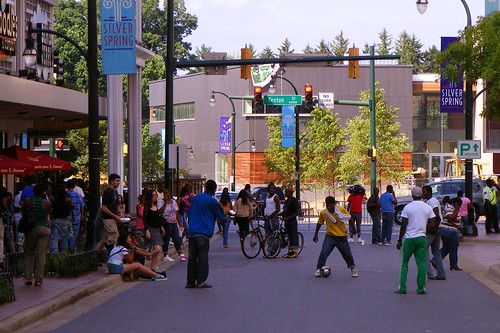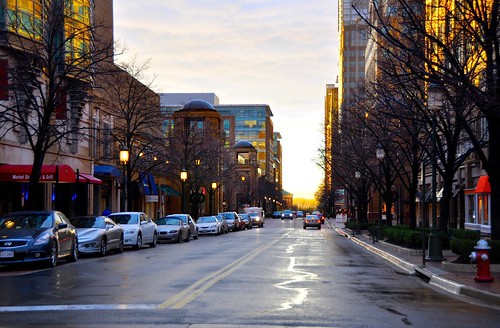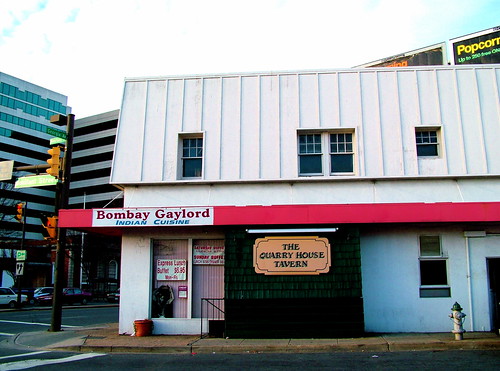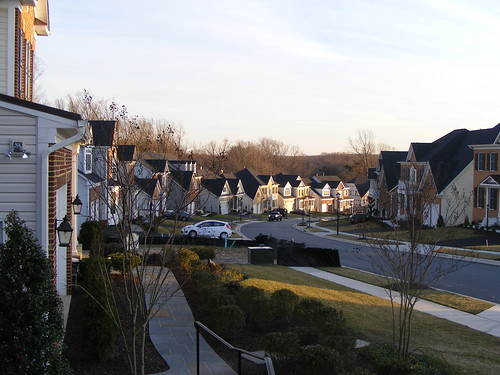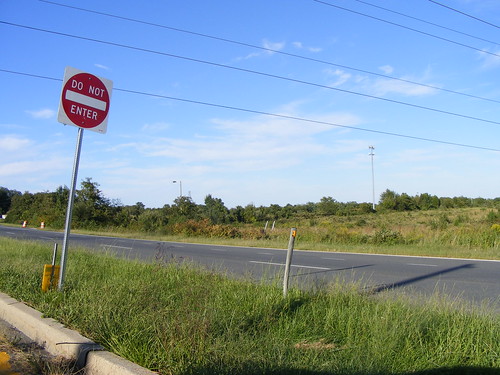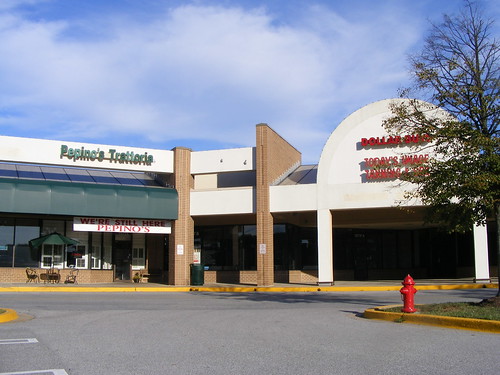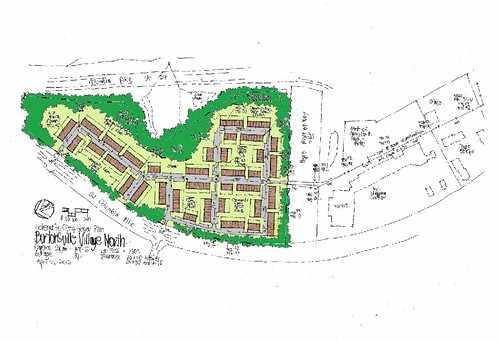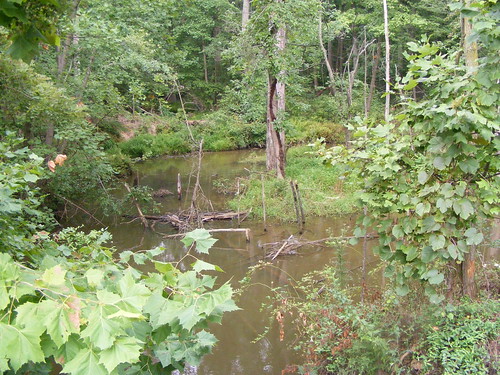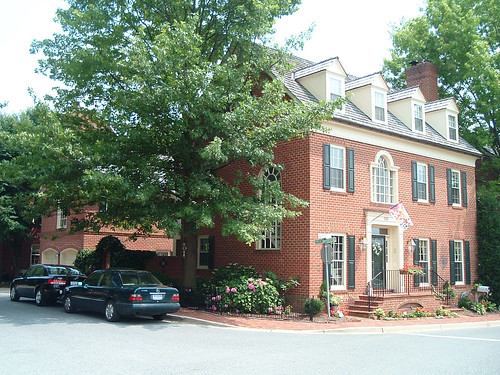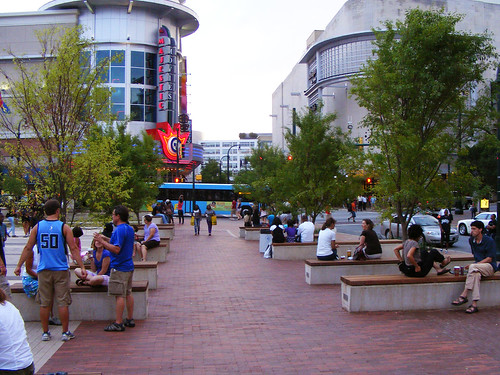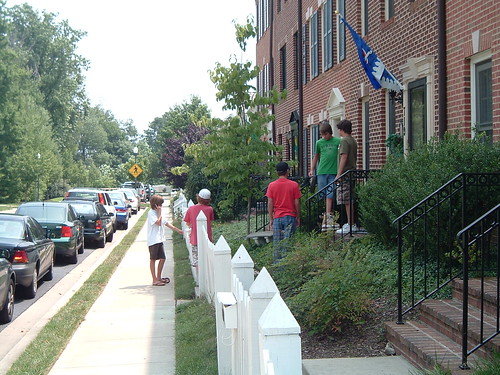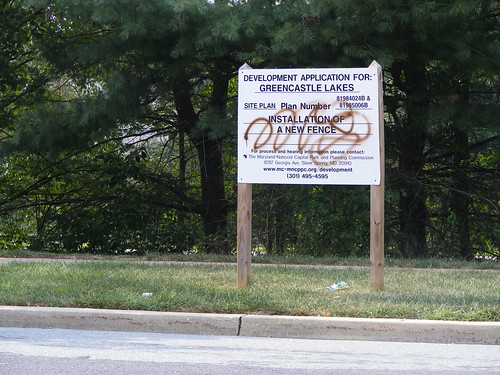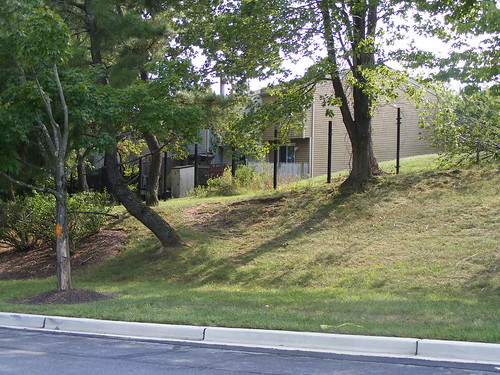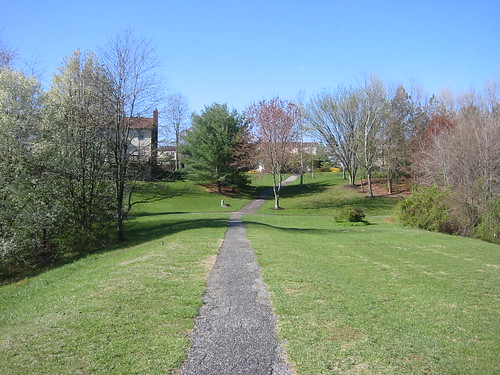 |
| Kefa Café on Bonifant Street. (Space 7:10 is the room on the left.) |
About a dozen people came out to "Unusual Suspects: Seeking Inclusive Civic Engagement in Silver Spring," a community roundtable last Friday evening hosted by myself and Amy Kincaid, who graciously offered us the use of Space 7:10 at Kefa Café on Bonifant Street. That may not sound like much, but in a space this small, that's a full house.
Inspired by a blog post by Takoma Park City Councilmember Seth Grimes, the event provided a lively discussion on how to get often-underrepresented groups, like young people and immigrants, involved in local affairs. Our featured guests were David Moon, a political strategist who writes the blog Maryland Juice, and Abigail Burman, co-founder of Stand Up to the Montgomery County Curfew, which successfully defeated a proposed youth curfew last year.
We also enjoyed the company of residents and local community leaders, including Jarrett Smith, the City of Takoma Park's
In 2009, Moon engineered the successful campaign of County Councilmember Nancy Navarro, the first Latina woman elected to the council. He spoke about the major demographic shift occurring in Montgomery County, which became majority-minority in the 2010 Census. The groundswell of support for the DREAM Act, which would allow undocumented immigrants who attended high school in Maryland to pay in-state tuition at public colleges, represents the "coming out" of minority and immigrant communities, he said.
The presence of people from different ethnicities or backgrounds affects the political discourse, Moon argued. "You have issues being discussed on the County Council just because there's a Latino member," he said.
 |
| Burman (third from right) and fellow campaigners collected signatures in opposition to the curfew proposal last summer in downtown Silver Spring. |
Burman, who will be attending Oxford University in England this fall, noted the challenge of reaching out to young people, who can't vote and are often disengaged in local politics. "Constituencies that are underrepresented . . . don't think they're going to be listened to," she said. Nonetheless, she found the anti-curfew campaign shared common ground with unexpected allies, like a local chapter of the Tea Party, which saw the curfew proposal as an example of government overreach.
The best way to change the conversation in their favor, Burman realized, was "just showing up." Being a presence at public hearings and committee meetings was a way to "flip expectations" of how involved young people could be, she said.
Of course, not everyone has the time, the means or the wherewithal to go to Rockville and sit through lots of meetings, effectively barring them from participating in local government. Many in attendance suggested that officials use social media, like Facebook, Twitter and blogs, to reach out. After all, many constituents and office-holders alike already use those platforms to voice opinions or talk about current issues.
One suggestion was that online comments be made part of the public record. To do that at the County Council now, for instance, you can write a letter, write an e-mail (which gets printed out), or testify at a hearing and submit fifteen hard copies of your testimony. This ensures that there's a written record of public input, with addresses and identifying information that may not always be identifiable in a Facebook comment. But if the Library of Congress can archive Tweets for research, can't the County Council use them to register public concerns on higher tax rates?
Online or off, participants stressed the importance of bringing people together so they can be heard. Both Moon and Burman said they'd found success in "maintaining a constant coalition of representation" for disenfranchised groups, which not only gets their issues heard but allows "best practices" in organizing or campaigning to be passed down from one generation to another.
While the meeting didn't result in any breakthroughs, it was a great opportunity to brainstorm ideas and get interesting people to meet with and talk to each other. It's also just one of many events hosted by Space 7:10, which range from art exhibitions to live performances to a salon series. Check out their website for information on what's happening there in the future. (Hopefully, if Amy will have me again, I'll get to organize another roundtable. Fingers crossed!)

